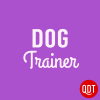Can Your Dog Pee on Command?
Think it’s impossible to train your dog to pee or poop on cue? Think again! The Dog Trainer has the perfect solution for those rainy days when you don’t want to get soaked walking Zippy.
Jolanta Benal, CPDT-KA, CBCC-KA

While you’re housetraining a puppy or dog, it can be a fatal mistake to bring him back inside as soon as he pees or poops. For most dogs, walks are the highlights of the day, and a dog who learns that eliminating ends his walk may also learn to hold it and hold it and hold it until you finally give up and go home, at which point he runs off to the most remote corner of your place for sweet relief.
But there are times when it’s handy for your housetrained dog to pee and poop on cue so you can cut things short: It’s raining. Or you’re running late to dinner with a friend, but it wouldn’t be fair to leave Zippy without giving him a toilet break. Or you have a just-barely-long-enough airport layover. If when you housetrained Zippy, you brought him to a good toilet spot and delivered a recreational walk only after he peed and maybe pooped, then Zippy probably empties himself quickly as a matter of course. To get even more efficient, you can also teach him a cue that means “Pee [or poop] right now, please.”
The process is simple but it does take plenty of reps – fewer if you’re starting with a puppy, more if you’re starting with a grown dog. You’ll be taking advantage of how all animals, including us, learn by association and prediction. If your dog hears a certain sound every time he’s about to eliminate, and only when he’s about to eliminate, he’ll associate that sound with eliminating. Eventually, hearing the sound can, all by itself, lead him to eliminate.

Pick a word or phrase that will mean “Pee now, please,” and another that will mean “Poop now, please.” You want a word or phrase unique to this situation – if your dog hears the same thing in several different circumstances, he won’t strongly associate it with any one set of circumstances. Since you know your dog well, you can tell when he’s about to pee and when he’s about to poop. From now on, when you see he’s about to pee, say your pee cue; when you see him getting ready to poop, say your poop cue. Nobody’s perfect, but try for as close to 100 percent accuracy as you can get. Important point: Don’t follow up your use of the cue by ending your dog’s walk unless you really, really have to. That goes not only for the training period but also for later refreshers.
How long will it take to put peeing and pooping on cue? Starting with a puppy is usually quicker. If you tend to talk a lot at your dog during training, then most sounds that come out of your mouth are probably filed under “Irrelevant” in his brain, so it will be harder for him to learn that this is an exception.
On the other hand, if you’re consistent in using the same cue and the same tone, the process will be quicker. All in all, what you get here is a big “It depends.” Go for overkill – train for a month before you experiment with giving the cue at a random time. Sure, it’s some work, but you’ll thank yourself during the next snowstorm.
Dog image courtesy of Shutterstock.

